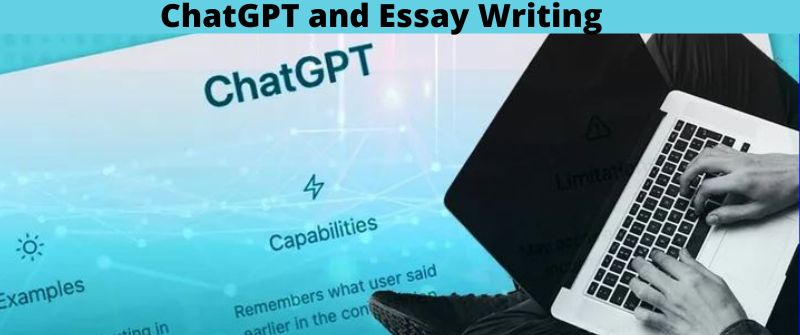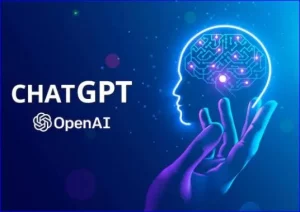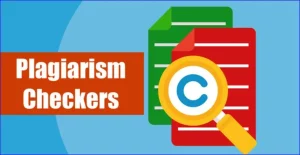Can ChatGPT write Essays: All you need to know about AI Essays

Essay writing is an essential skill that students must master in order to succeed academically and professionally. Writing a high-quality essay requires not only a strong grasp of the subject matter, but also effective research, critical thinking, and effective communication skills.
With the advancements in artificial intelligence (AI), ChatGPT, a powerful AI language model, has emerged as a new tool that can assist students in writing essays. ChatGPT is capable of generating text that is well-written, coherent, and can convey complex ideas.
However, while it may provide a useful resource for students, it is important to consider the ethical implications of using AI-generated content for academic purposes.
In this post, I will examine the capabilities and limitations of ChatGPT in essay writing, and explore the ethical considerations surrounding its use.
Can ChatGPT write Essays?
Yes, ChatGPT can write essays. In fact, it is one of the most impressive capabilities of the AI language model. ChatGPT and other similar AI language models are capable of generating coherent, high-quality text in various domains, including writing essays.

However, it is important to note that the quality of the essay produced by ChatGPT can vary depending on the prompt given and the level of complexity required.
While ChatGPT can generate essays that may appear to be well-written and articulate, it may lack the deeper insight, critical thinking, and creativity that a human writer can bring to an essay.
Moreover, using AI-generated essays for academic purposes can be considered unethical and may be classified as academic dishonesty, particularly in cases where it is not disclosed that the essay was generated using AI technology.
Therefore, while ChatGPT may be able to write essays, it is important to use it ethically and responsibly. Read our detailed guide on how to use ChatGPT to write an essay and make it unique.
Can ChatGPT write Essays without Plagiarizing
ChatGPT has been trained on a vast amount of text data and can generate text that is unique and original. However, there is a possibility that ChatGPT may produce text that is similar to existing text, leading to inadvertent plagiarism. Therefore, it is essential to proofread and check the generated text for any similarities to existing sources.
To reduce the risk of plagiarism, students using ChatGPT to write essays should ensure that the text generated is original and does not contain any copied content from existing sources. They should also use tools such as plagiarism checkers to verify the authenticity of their essay.
Additionally, it is important to keep in mind that while ChatGPT can generate text that is well-written and articulate, it may lack the critical thinking and deeper insight that is necessary for producing high-quality essays.
You can be caught using ChatGPT to write essays and it is cheating. Therefore, students should use ChatGPT as a tool to support and supplement their writing process, rather than relying on it entirely to write their essays
How does ChatGPT write Essays
ChatGPT writes essays by generating text that is based on its previous training on a large corpus of text data. It uses deep learning algorithms and natural language processing (NLP) to analyze the given prompt, generate ideas and concepts, and produce a well-structured, coherent essay.
When generating an essay, ChatGPT can utilize several strategies such as language modeling, text completion, and paraphrasing to create a coherent and well-structured text.
It uses a process called “autoregression,” which allows it to generate text one word at a time, building on the previous words to form a complete sentence.
The quality of the essay generated by ChatGPT is largely determined by the complexity of the prompt given, as well as the quality and quantity of the data it has been trained on.
While ChatGPT can produce text that appears to be well-written, it may not be able to generate content that demonstrates deep insight, critical thinking, or creativity, which are essential elements of high-quality writing.
It is important to note that while ChatGPT can generate essays, it should not be used as a replacement for learning how to write effectively.
Rather, it should be used as a tool to support and supplement the writing process, with the final essay being the product of the student’s own research, critical thinking, and communication skills.
Pros and Cons of ChatGPT in essay writing
Advantages of ChatGPT essays
There are several advantages of using ChatGPT in essay writing:
1. Time-saving
One of the biggest advantages of using ChatGPT is that it can save a considerable amount of time. Rather than spending hours researching, organizing, and writing an essay, students can input their prompts and generate a well-written essay in a matter of minutes.
2. Improved writing skills

ChatGPT can provide students with well-written examples of essays that they can study and learn from.
This can help students improve their writing skills, particularly in terms of structure, grammar, and vocabulary.
3. Enhanced creativity
ChatGPT can generate unique and original content, which can inspire students to think outside the box and come up with innovative ideas.
4. Reduced stress
Essay writing can be a daunting and stressful task for many students, particularly those who struggle with writing. By providing a tool that can simplify and streamline the writing process, ChatGPT can help alleviate some of that stress.
6. Accessibility
ChatGPT is available online and can be accessed from anywhere, making it a convenient tool for students who may not have access to traditional writing resources.
While there are certainly advantages to using ChatGPT in essay writing, it is important to keep in mind that it should be used as a supplement to the writing process, rather than a replacement for learning how to write effectively.
Disadvantages of ChatGPT writing Essays
While there are advantages to using ChatGPT in essay writing, there are also some disadvantages to consider:
Lack of critical thinking: ChatGPT generates text based on the input provided to it, but it does not have the ability to engage in critical thinking or provide original insights. This means that essays generated by ChatGPT may lack the depth of analysis that is expected in academic writing.
Risk of plagiarism: As mentioned earlier, there is a risk that essays generated by ChatGPT may contain plagiarism if the program accidentally reproduces content from existing sources. It is important for students to check and verify the authenticity of the text generated by ChatGPT before submitting it.
Limited subject knowledge: ChatGPT is a language model that has been trained on a wide range of text, but it may not have deep knowledge or expertise in specific subject areas. This can make it difficult to generate high-quality essays for subjects that require specialized knowledge, such as scientific or technical writing.
Dependence on technology: Relying too heavily on ChatGPT to write essays can create a dependency on technology and discourage students from developing their own writing skills.
Quality assurance: While ChatGPT can produce well-written essays, there is still a need for students to have their work reviewed by a human teacher or tutor to ensure that it meets academic standards.
It is important for students to weigh the advantages and disadvantages of using ChatGPT in essay writing and to use it as a tool to supplement, rather than replace, their own writing skills.
How to detect AI-written essays
Detecting AI-written essays can be challenging, as the writing generated by AI language models such as ChatGPT can be very similar to human-written text. However, there are a few methods that can be used to detect AI-written essays:
1. Plagiarism detection software

Plagiarism detection software can be used to identify instances of text that have been copied or paraphrased from other sources, including essays generated by AI language models.
This can be a useful tool in identifying instances where an essay has been written using AI.
2. Style and tone analysis
While AI language models can produce well-written text, they may not always be able to mimic the nuances of human writing, such as tone and style. Also, I think analyzing the style and tone of an essay can help identify if it was likely written by a human or an AI language model.
3. Use of uncommon phrases and vocabulary
AI language models may struggle to use uncommon phrases and vocabulary that are not present in their training data. Identifying instances of uncommon language use in an essay can help determine if it was likely written by a human or an AI language model.
4. Inconsistencies in the essay
AI language models may not always produce writing that is coherent and consistent. Identifying inconsistencies in an essay, such as abrupt changes in tone or topic, can be an indication that it was likely written by an AI language model.
It is important to note that these methods are not foolproof, and detecting AI-written essays may require a combination of several different techniques.
Ultimately, the best way to prevent AI-generated essays is to educate students on the importance of academic integrity and to discourage them from using AI language models as a replacement for their own writing skills.

